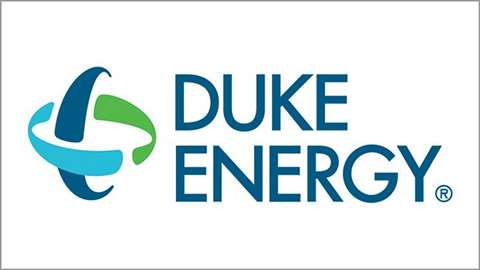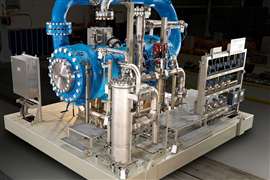Duke Energy expands clean energy action plan
February 11, 2022

Duke Energy has expanded its efforts to limit climate change while keeping its commitment to reliable, accessible and affordable energy, the company announced.
Duke said it plans to reduce the amount of energy it generates from coal to less than 5% of total generation by 2030. By 2035, it plans to fully exit coal.
Duke said it plans to expand its 2050 net-zero goals to include Scope 2 and certain Scope 3 emissions. In Duke’s electric business, its net-zero goal will include greenhouse gas emissions from the power it purchases for resale, from the procurement of fossil fuels used for generation and from the electricity purchased for its own use.
Duke plans to add a new net-zero goal by 2050 for its natural gas business. That goal would include upstream methane and carbon emissions related to purchased gas and downstream carbon emissions from its customers’ consumption.
The company said it has already reduced Scope 1 carbon emissions from electricity generation by 44% from 2005 levels, the equivalent of removing 13 million vehicles from the road. It is on pace to achieve its goals of at least 50% reduction by 2030 and net-zero by 2050 from electricity generation and net-zero methane emissions by 2030, the company said.
To reach those goals, Duke has retired 56 coal units, representing approximately 7,500 megawatts since 2010. The company has filed integrated resource plans to exit coal generation by 2035 and has partnered with Accenture and Microsoft to establish a satellite leak detection platform to measure baseline methane emissions from natural gas distribution systems.
“As one of America’s largest electric and gas utilities, we and many of our stakeholders share the view that we can take a leadership role in tackling the greenhouse gas emissions associated with our business and value chain,” said Duke Energy Chief Sustainability Officer Katherine Neebe. “Policy changes and technological innovation are expected to play a key role in meeting these enhanced goals.”
Duke said the first step in its climate change efforts is measurement. In the company’s sustainability report, it discloses Scope 1, 2 and some Scope 3 emissions. Over the coming months, Duke said it will work to determine the emissions associated with the priortized Scope 3 categories.
The next step will be to identify what actions the company can take over time to reduce these emissions, Duke said.
“The energy sector must transform for the future in a way that also benefits our society today,” Neebe said. “Achieving this vision will require us to transition to low- and zero-emissions fuel sources, invest in our communities and develop and prepare a diverse workforce. Taken together, these efforts will deliver long-term value for our stakeholders.”
Duke Energy announced it will be transparent about its progress and what it can achieve. The company will share more details during its ESG investor day later this year.
Scope 1, 2 and 3 emissions are based on the Greenhouse Gas Protocol, a non-profit which provides standards for companies to report and reduce greenhouse gas emissions. Scope 1 are direct emissions from the company, such as the power the company generates and its fleet of vehicles.
Scope 2 emissions are indirect emissions from power the company purchases from others to use in its facilities. Scope 3 includes indirect emissions that arise from others in the company’s value chain.
MAGAZINE
NEWSLETTER

CONNECT WITH THE TEAM








